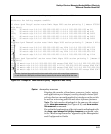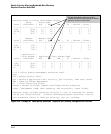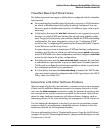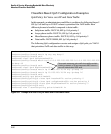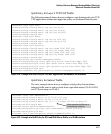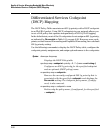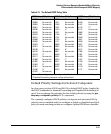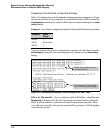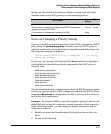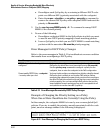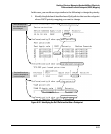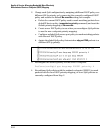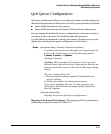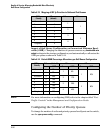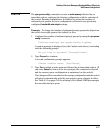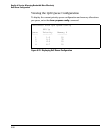
Quality of Service: Managing Bandwidth More Effectively
Differentiated Services Codepoint (DSCP) Mapping
In this case, the packets are handled as follows (as long as no other QoS
classifier marks a new 802.1p priority on the matching packets):
802.1Q Status
Outbound 802.1p
Priority
Received and forwarded on a tagged-port member of a VLAN Unchanged
Received on an untagged-port member of a VLAN; forwarded on a 0 (zero)—”normal”
tagged-port member of a VLAN
Forwarded on an untagged-port member of a VLAN None
Notes on Changing a Priority Setting
If you try to modify the priority associated with a DSCP codepoint in a DSCP
policy using the qos dscp-map priority command, and if the DSCP policy is
currently used by one or more global QoS or classifier-based QoS policies, the
following error message is displayed:
Cannot modify DSCP Policy < codepoint > - in use by
other qos rules.
In this case, you can enter the following QoS show commands to identify in
which global and classifier-based QoS configurations the DSCP policy is
currently used:
show policy <qos-policy>
show qos tcp-udp-port-priority
show qos device-priority
show qos type-of-service
show qos protocol
show qos vlan
show qos port-priority
After determining the QoS configurations in which the DSCP-priority mapping
is used, you can either delete a QoS configuration and reset the DSCP-priority
mapping to No-override, or change either the 802.1p priority or the codepoint
used in the QoS configuration.
Example. If codepoint 000001 is currently mapped to priority 6, and several
global QoS policies use this codepoint to assign a priority to their respective
types of matching traffic, you can change the priority associated with the
codepoint as follows:
1. Identify the global and classifier-based QoS policies that use the code-
point.
2. Do one of the following:
6-91



